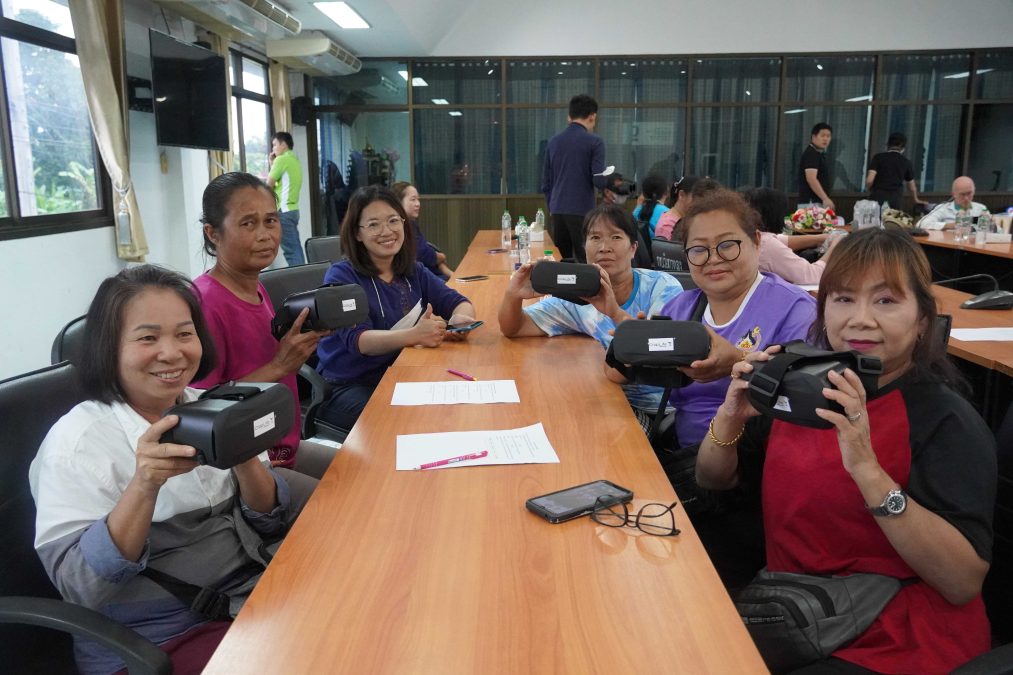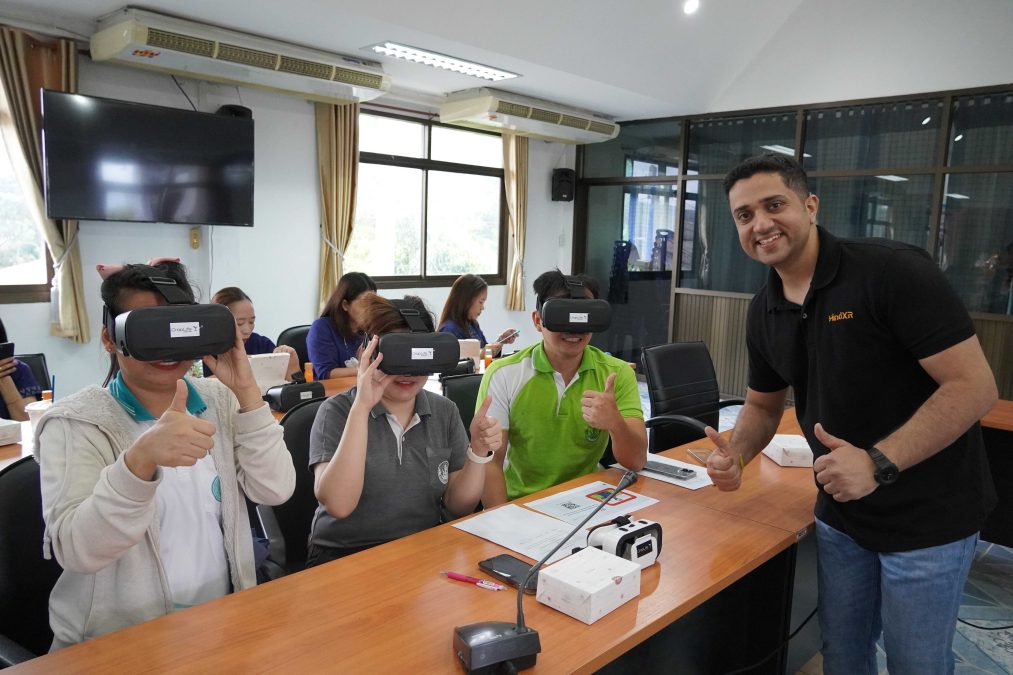CropLife International hosted a breakout session at the recent World Food Prize Foundation’s Borlaug Dialogue in Des Moines, Iowa, USA. At the session, they presented and demoed the use of Virtual Reality (VR) as an aid in farmer product stewardship training. It included a video testimonial from their Thailand training programme viewable here.
Exploring virtual reality for farmer training
Virtual reality is not just for gaming anymore. Armed with smartphones and headsets, farmers in Thailand recently gained hands-on training in crop protection safety practices that are a key component of stewardship.
The headsets provided a 360-degree experience that cut the farmers off from the outside world, immersing them in a simulated farm setting. Using their gaze to direct the action, they were presented with options and made choices, much like a video game. Their progress was tracked in the platform, providing instant feedback and eliminating the need for testing to determine how well they had grasped the principles of safety regulations and correctly using personal protection equipment (PPE).
“Where training of motor skills is required, virtual reality beats everything except doing it for real,” said Aditya Walia, the New Delhi-based CEO of HindXR, who designed the training curriculum, provided an app for trainees to view and interact with the content and delivered a content management system to put the content on smartphones. “We are building muscle memory.”
“Imagine learning how to drive a new combine harvester before even setting foot in one,” added digital innovator Dana Farbo, the New York-based founder of Immersive LD, who adapted CropLife International’s traditional farmer safety training to the VR format. “We see VR training as growing to be part of learning and training in all aspects of agriculture, from equipment expertise to pesticide applications and more.”

Farbo and Walia have been working together since 2017 to implement their shared vision of integrating immersive learning into all learners’ lives.
“The advantages are numerous, including better retention and shorter times to competency,” Farbo explained. “Virtual reality has achieved recall rates of eighty per cent a year after training.”
The possibilities of remote learning for farmers
Virtual reality (VR) training offers other benefits, too. There is a chronic shortage of human trainers, and in-person training can be expensive and logistically challenging, especially if the trainees are brought to a central location. With VR, trainees can join remotely or gather in small groups in their communities.
“Once they understand how to use the equipment, they are on their own,” Walia said.
Since trainees retain access to the curriculum through their smartphones, they can refresh their learning or share it with others, which makes the training more impactful. The immersive effect also heightens the effectiveness.
“Immersive learning can include many aspects of traditional learning techniques, such as 2D quizzes, flat images and videos. It also introduces new ways to engage, like sensory feeling (haptics) where you can feel vibrations or mini shocks using full body suits,” Farbo said.
“We look at a number of things to determine the flow of content and how best to engage the audience. The storyline takes into consideration how immersive we want the content to be and the technology limitations of the audience such as internet speeds and many other factors. We do not want to create something that is too complicated but that takes people on small journeys. We find that immersive learning using VR devices is best done in small segments. People do not want to be in headsets for hours at a time.”
“When you showcase the content through VR,” Waila added, “it has to be really crisp and interactive, very visual, with less talking and more hands-on.”
Beyond virtual reality: Fostering a cooperative atmosphere
Farbo mentioned that the VR training also includes “a behavioural component, in that we try to create some type of shock component without making it a scary experience. For the first module on using proper PPE, we added a scene in the beginning that simulated getting drops of spray on your screen and associated that with a message that spray can hit you and that you need to prepare for it. We do not want to create fear, but we do want to drive a point.”
To that end, Walia narrated the story of one farmer with eye problems who said he had never grasped the value of wearing goggles while applying crop protection products until he went through the VR training. “He said he understood now and will share that information in his village.”
Walia was heartened by that response as well as “the smiles on the faces of the farmers during the training. The game-like dynamics really engaged the students and seemed to foster a cooperative atmosphere, with the fast learners helping the slower learners. That is something we had not anticipated.”
“VR also appeals to a younger generation of tech-savvy farmers,” he noted.

Reducing costs and expanding reach
The biggest current limitations to widespread adoption of VR training are the costs of developing modules and distributing devices that best showcase the modules, such as VR headsets. HindXR’s system cut the cost of a VR headset from $250 to $400 down to just $7 by using smartphones to deliver the content. Further reductions are likely as VR training continues to expand.
“CropLife International has been a forward-thinker in this,” said Walia, noting that VR training is also gaining traction in the healthcare, construction, aerospace and automotive industries. “This is actually the pulse of the market and CropLife has been fast in picking it up and advancing with it.”
“Every day, farmers—and the environment—suffer because they are not able to access knowledge that could help them,” said Dr. Andrew Ward, CropLife International’s Director of Stewardship. “We want to move quickly. We want to learn from and work with others to make sure that if this is a valuable tool, it is accessible by all farmers everywhere.”
Enthusiastic response and future prospects
CropLife International partnered with Thailand’s Department of Agriculture, Department of Agriculture Extension, Kasetsart University, National Innovation Agency, GIZ, Global G.A.P. and its own association, TAITA, to offer the training. One was held in northern Thailand, and the other in Bangkok. “Based on the responses we got, a few refinements are likely, such as enlarging the size of the text font and offering English and Thai options,” Waila said.
A brainstorming session with Thailand’s agricultural officials also resulted in some new curriculum ideas that could be disseminated to farmers across the country, such as effectively managing a crop infection, how to fly a drone and understanding plant diseases.
“We are collating the feedback, but there was a lot of excitement about the potential for this way of farmer training,” said Ward, noting that CropLife International member companies and its global network of regional and national associations train over 20 million growers/farmers annually in good agricultural practices and product stewardship.
The adoption of virtual reality creates a unique opportunity to train and equip more farmers.



